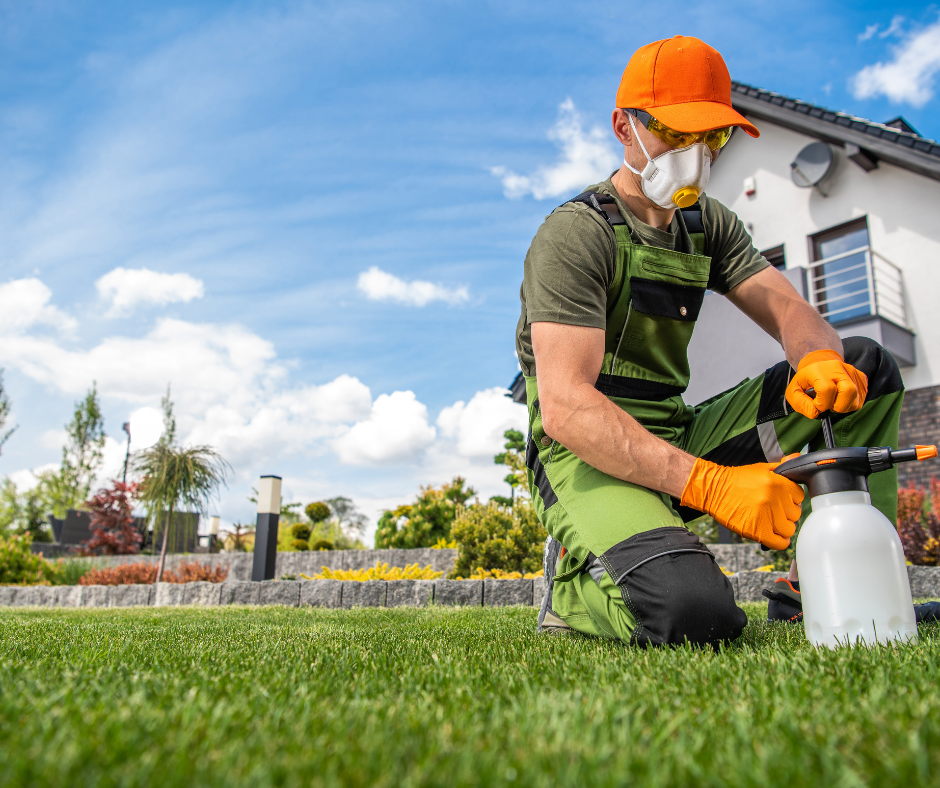When is the Right Time to Apply Preemergent?

Ok, if you are reading this you probably understand what a preemergent is, but do you understand how it works? Understanding that will help give you the answer to when is the right time, or at least it will help you establish the right time for your location.
Designing a strong agronomic plan for your lawn must begin with a preemergent weed control program. Why? Because you are trying to solve weed issues before they arise. By not letting weeds develop will give your lawn a better chance of success and will inevitably reduce your post emergent herbicide use.
Timing of Application
Preemergent effectiveness can be hindered by numerous factors such as: precipitation, soil type, soil structure, application timing, target species and aerification. If you have any compacted areas in your lawn, it may be advisable to aerate in order to loosen up the soil prior to an application. Runoff from a capped surface is a sure way frustration, and waste of preemergent. We want the chemical to enter the soil surface and stay. Solid tine instead of pulling a core is a great way to loosen compacted soils too. This could be done a few weeks before applications but not after for at least a month.
| Common Weed Species | Germination Soil Temperature in F | Best Preemergents & Brand Names |
| Crabgrass | 53 – 58 | Dithiopyr (Dimension), Pendimethalin (Pendulum), Prodiamine (Barricade), Oryzalin (Weed Impede), Isoxaben (Gallery) |
| Goosegrass | 60 – 65 | Isoxaben (Gallery), Pendimethalin (Pendulum), Dithiopyr (Dimension), Prodiamine (Barricade), Dimethenamid-P (Tower) |
| Annual Bluegrass | Below 70 | Dithiopyr (Dimension), Prodiamine (Barricade) |
| Henbit | 59 – 68 | Atrazine (Atrazine), Isoxaben (Gallery) |
| Common Chickweed | 53 – 68 | Atrazine (Atrazine), Isoxaben (Gallery), Simazine (Princep) |
| Dandelion | 50 – 75 | Isoxaben (Gallery) |
| Doveweed | 70 – 90 | Dimethenamid-P (Tower) |
| Clover | Below 70 | Mesotrione (Tenacity) |
| Speedwell | 60 – 70 | Atrazine, Isoxaben (Gallery) |
| Sedges | Above 54 | Dimethenamid-P (Tower) |
How Preemergent Works

A preemergent can’t kill an inactive seed. Seeds have a coating; (scientifically called the seed coat, amazing right!); around the seed that prevents anything being absorbed into it until first root is activated by surrounding soil temperature. This root is called a radicle and needs to absorb moisture in order to continue to develop. If preemergent is absorbed at this time, it enters the seed and kills it.
Timing is important here; you need the right chemical and apply before your target soil temperature. Too late and you miss the optimum kill opportunity and too early could lead to it dissipating in the soil.

In ideal situations the preemergent can be active in the soil for 6 plus weeks, on the other hand it could be effective for a few or more. These are all influenced by environmental conditions and cultural practices. So, keep track on your soil temperature, apply chemical when soil temperature is 3 – 5 degrees below your target temperature for an average of 4 days with no sign of the soil temperature dipping below that temperature for a long period.
Numerous apps are available that track soil temperature and can help you.
Why Sequential or Split Applications
Degradation, dissipation and season length are the key factors that influence this. Preemergents have a minimum application rate in which the product will be effective at and will provide a length of time the chemical will be effective for under ideal conditions. Degradation of chemical in soil leads to effectiveness loss and consequently would be a situation where reapplication may be necessary.
Split application would be a scenario where you may go at half the max labeled rate in a tight application window of a few weeks. This reason for this would be to keep the chemical rate above minimum effectiveness level in the soil. In some instances, application failure can occur if minimum rate is applied, and excessive rainfall occurs afterwards. This can lead to leaching, runoff and dissipation and you getting frustrated with your application. Instead of a 17 oz per acre rate, you might be at a 10 oz per acre rate which equates to a failure and weed development.
A sequential application would be for a season long control situation. You would reapply chemical after the application window has expired and the label states that it’s safe to reapply. If you see crabgrass popping up mid-summer after a preemergent application in the spring, this would be a scenario where you might reapply.
Related Posts
Mixing Herbicides & Fertilizers with your Preemergent Lawn Application
Multitasking is something that I think is important when maintaining a lawn, time is crucial, …
January 30, 2023© 2023 LaPageBrands, LLC. All rights reserved.


